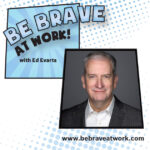
by Ed Evarts | Jan 22, 2019 | Interacting, Visibility and Value
The degree to which you interact with others is similar to the nature versus nurture philosophy that we hear or read about regarding human development. In scholarly articles published on this topic, nature typically refers to characteristics you have inherited. These...

by Ed Evarts | Jan 17, 2019 | Interacting, Visibility and Value
As you work to expand your interactions beyond networking, you should consider the benefits of increasing the degree to which you interact with others. By interacting with colleagues at your organization, you: Increase your knowledge of what is occurring at your...

by Ed Evarts | Jan 15, 2019 | Interacting, Visibility and Value
You know office hermits. The colleagues who, hidden within the confines of their offices or workstations, click away on their computer keyboards, mumble their way through conference calls behind closed doors, and slip in and out of their offices and workstations as...

by Ed Evarts | Jan 10, 2019 | Responsiveness, Visibility and Value
Not all who are unresponsive can blame the overwhelming amount of incoming emails and phone calls as the cause of their behavior. Many of us tend to assume that other people’s low responsiveness is due to workload when, in reality, they may not possess a natural...

by Ed Evarts | Dec 20, 2018 | Responsiveness, Visibility and Value
There is a big difference between acknowledging an outreach and providing an answer to the outreach. You may not have the answer or you may not have the time to provide the answer at that moment. Regardless of the situation and in order to help your colleagues make...










